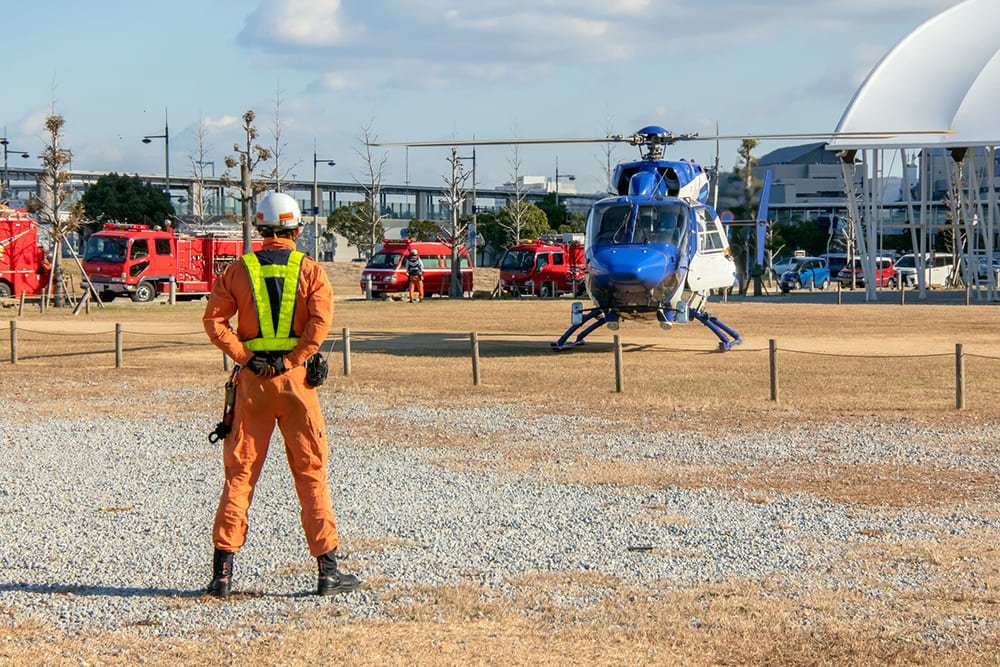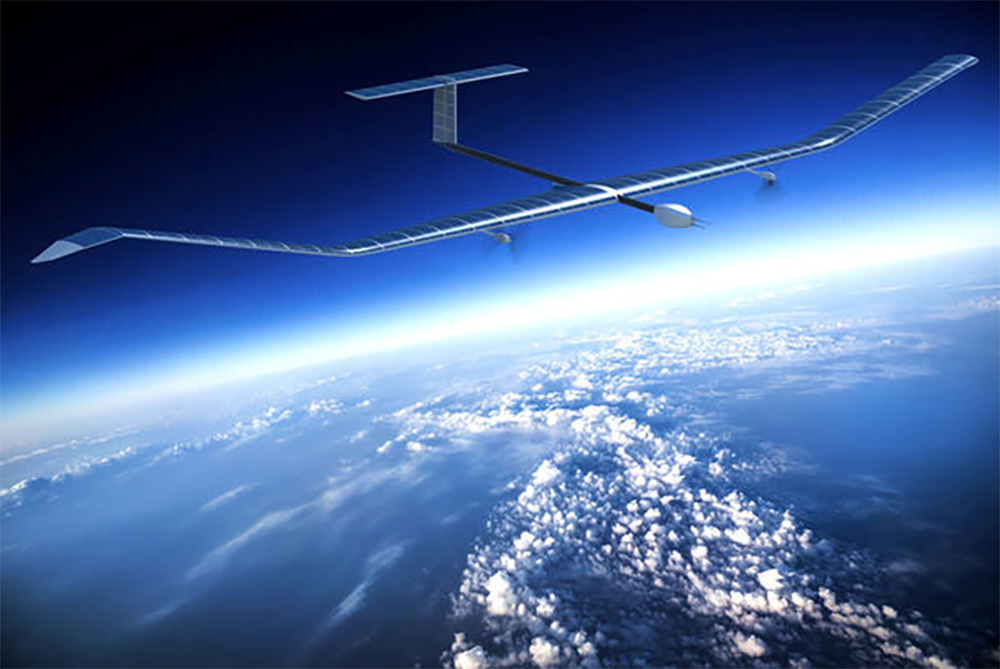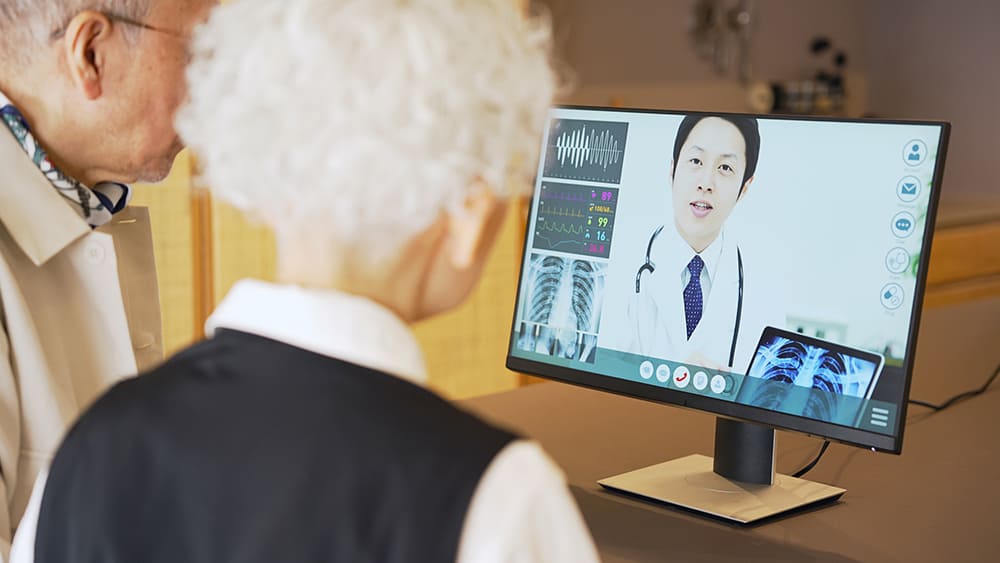The Beyond 5G Society Being Pursued by Research and Development
Disaster Prevention and Local Communities Vitalization
In a society where Beyond 5G, next-generation information and communications infrastructure, has been established, ultra-high speeds, ultra-low latency, and ultra-high numbers of simultaneous connections—all 10 times greater than 5G—will be realized. Various ways to utilize this technology are being considered in the field of disaster prevention to minimize damage from disasters that are becoming more frequent due to climate change, as well as in local communities in Japan where the population is declining.
Impact on the field of disaster prevention
Next-generation communication technologies will revolutionize existing systems and enable faster and more accurate disaster response. Satellite communications have been used during large-scale disasters to prevent system isolation by serving as a mobile backhaul. Beyond 5G leverages unparalleled data transmission speeds and ultra-low latency to enable the construction of non-terrestrial networks (NTN) that can communicate across land, sea, and air, contributing significantly to real-time information gathering even in the event of a disaster. For example, high-precision images and positioning data from the air can be quickly aggregated, enabling disaster prevention agencies to accurately assess the situation in affected areas and perform rapid simulations, which should help in conducting more appropriate rescue operations and more efficient evacuation guidance.


In addition, in a Beyond 5G society, ultra-high numbers of devices are expected to be connected simultaneously, enabling smooth coordination between various devices even in the event of a disaster. For example, it will be possible to confirm the situation from the air using drones, monitor the situation using IoT sensors that have not been damaged, and receive SOS signals from disaster victims simultaneously, thereby enabling rapid coordination of information and effective response.
One of the most notable NTN technologies is HAPS, which operates at an altitude of approximately 20 km.
HAPS stands for High Altitude Platform Station and is also referred to as a flying platform station. It is a system that uses unmanned aerial vehicles to provide wide-area wireless communication services from the stratosphere. In the event of a large-scale disaster where communication is disrupted in a specific area, HAPS can be deployed to temporarily restore communication in the affected area.


One of the major advantages of HAPS is that it is less expensive to deploy than existing satellites. This enables HAPS to be rolled out quickly, contributing to the rapid establishment of communication networks during disasters and the provision of communication services to remote islands and mountainous areas. In addition, because HAPS operates at a lower altitude, it can acquire high-resolution images and data without latency better than satellites and also has the potential for direct communication between terminals.
HAPS is currently undergoing further research and development toward practical application, including studies on the effects of weather and obstacles as well as changes in reception sensitivity when turning.
Improvements in the volume and speed of data handling enabled by Beyond 5G will not only be useful in times of disaster but will also contribute to more accurate disaster prediction. For example, by combining prediction models that take into account past earthquake and weather data and the status of social infrastructure with wide-area information obtained from satellites and other sources, it will be possible to formulate evacuation plans for local residents and reduce the risk of damage.
Impact on local communities
Ultra-high-speed, high-capacity, and low-latency information and communications technology is expected to contribute to the revitalization of local communities by enabling new economic activities and transforming traditional lifestyles.
Beyond 5G has the potential to improve medical and educational services and promote business development in remote areas. Remote medical care and education will increase residents' access to specialized medical institutions and high-quality educational opportunities. Expanding educational and employment opportunities in remote areas is expected to contribute significantly to slowing population drain and revitalizing local communities.
In addition, companies and businesses located in remote areas will also be able to reach more customers and business partners through Beyond 5G to gain new business opportunities.


Furthermore, Beyond 5G is expected to help promote tourism. High-definition images and VR technology can be used to convey the appeal of a region in a more immersive and realistic way. Virtual tours and interactive tourism content can help attract new tourists and increase repeat visitors.
Beyond 5G can also contribute to innovation in local industries. When used in conjunction with IoT technology, it has the potential to improve productivity in agriculture and manufacturing and create new business models. Agricultural management based on accurate data collection and analysis, as well as efficient manufacturing through remote control, are expected to enhance the competitiveness of local industries and lead to the creation of new jobs.
(Reference)
- Beyond 5G White Paper ~Message to the 2030s~ (version 4.0)
(XG Mobile Promotion Forum)
https://xgmf.jp/wp-content/uploads/2024/12/Beyond-5G-White-Paper-4.pdf - Beyond 5G/6G White Paper March 2023 (Japanese, version 3.0)
(National Institute of Information and Communications Technology )
https://beyond5g.nict.go.jp/images/download/NICT_B5G6G_WhitePaperJP_v3_0.pdf

